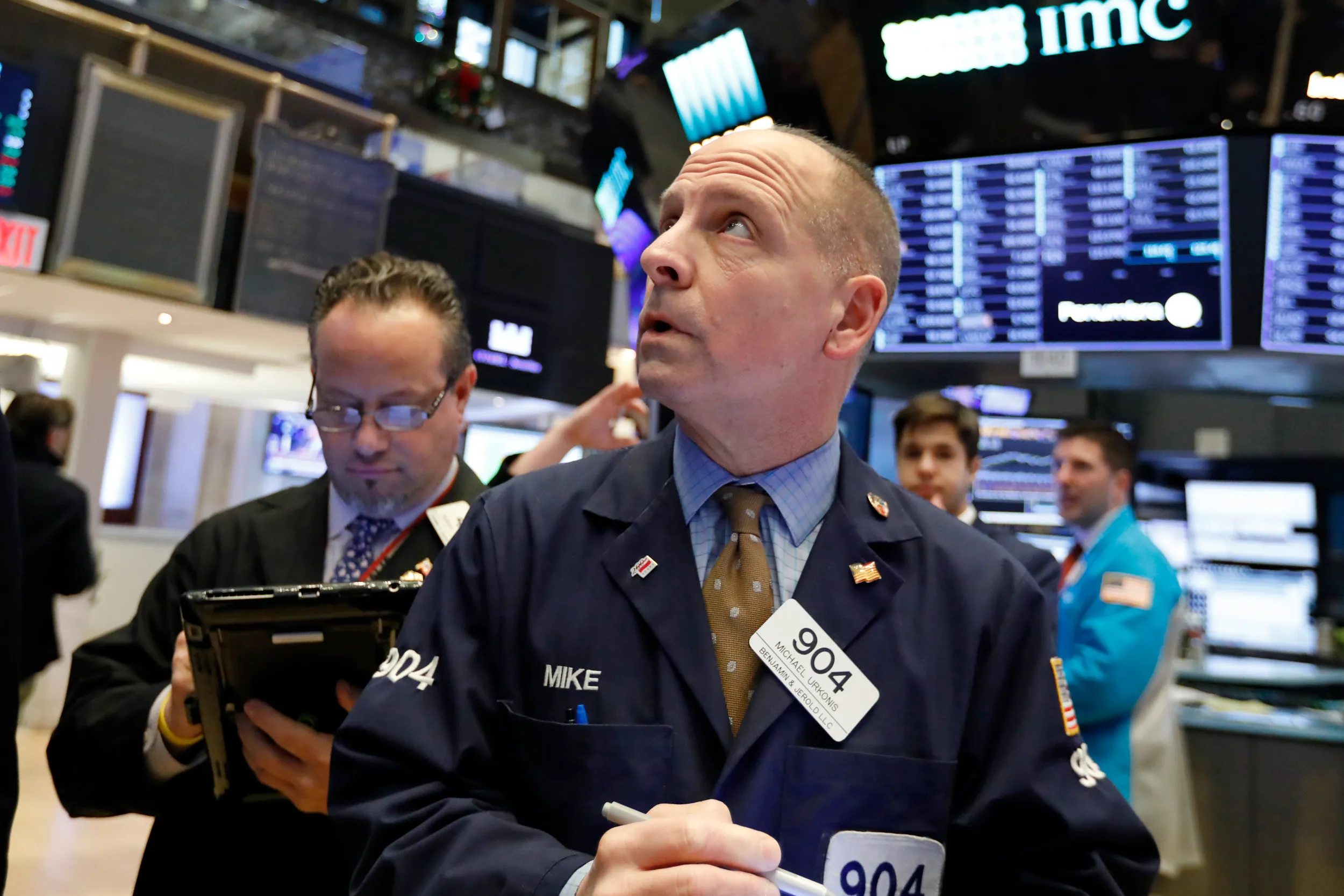The stock market experienced a decline of 450 points in the Dow Jones Industrial Average on Thursday following the release of a report by ADP indicating the creation of nearly half a million new jobs in the private sector during June. This development led to an increase in Treasury yields and added further pressure on U.S. stocks.
The S&P 500 slipped by 55 points or 1.2% to reach 4,392, while the Dow Jones Industrial Average shed 453 points or 1.3% to settle at 33,835. The Nasdaq Composite also saw a decline of 181 points or 1.3%, reaching 13,610. These losses occurred as U.S. investors returned to the market after the July 4 Independence Day holiday, with the Dow falling 0.4% and the S&P 500 breaking a three-day losing streak on Wednesday.
Investor concerns regarding the Federal Reserve's interest rate plans were further fueled by the monthly ADP private payrolls data, which revealed the creation of 497,000 new jobs in June. This figure was nearly double the number recorded in May and significantly exceeded economists' forecast of 220,000. It is important to note that the ADP private sector jobs data does not aim to predict the U.S. Labor Department's monthly jobs data, which includes government employees. The Labor Department's June data is scheduled for release on Friday.
The release of this data led to a surge in Treasury yields, reaching fresh three-month highs, as investors speculated that it would prompt the Federal Reserve to adopt an even more aggressive stance in raising its policy interest rate. Additional weight was added to this perception by comments made by Dallas Federal Reserve Bank President Lorie Logan, who called for the central bank to take further action in addressing inflation.
Mark Luschini, chief investment strategist at Janney, highlighted the impact of the ADP report and Logan's comments on Treasury yields and stock prices. He noted that the unexpectedly strong jobs growth reported by ADP, combined with Logan's remarks, resulted in higher Treasury yields, which in turn weighed on stock prices.
Andrew Hunter, deputy chief U.S. economist at Capital Economics, suggested that the unusually robust June jobs number may have been influenced by seasonal factors in the data.
Other U.S. data released on Thursday showed a slight increase in Americans applying for unemployment benefits during the week ending July 1, as indicated by the weekly jobless benefit claims data. The number rose by 12,000 to reach 248,000. The May JOLTS (Job Openings and Labor Turnover Survey) report survey displayed a decline in job openings below the 10 million mark for the second time in May, signaling a potential cooling of the strong U.S. labor market.
A barometer of business conditions in the crucial U.S. services sector, as measured by the ISM (Institute for Supply Management), rose to 53.9% in June, up from 50.3 in the previous month, surpassing economists' expectations of 51.3%. However, a similar survey on U.S. manufacturing released earlier in the week indicated a decline in activity to the lowest level since May 2020.
Analysts from Bespoke Investment Group observed that U.S. stocks began the second half of the year, and the third quarter, with losses, erasing some of their gains from earlier in the year. Rising yields were identified as a significant factor weighing on stocks.
The release of minutes from the Fed's June policy meeting, which occurred on Wednesday, further solidified expectations of an upcoming increase in borrowing costs by the U.S. central bank, potentially as early as July, with the possibility of further increases thereafter. Michael Lebowitz, a portfolio manager at RIA Advisors, expressed concernsabout the impact of more hawkish rhetoric from senior Fed officials, stating that it could push yields even higher and potentially drive stocks lower.
On Thursday, Treasury yields experienced a significant rise, with the 10-year Treasury note reaching 4.060%, its highest level in four months, representing a 12.5 basis point increase. The 2-year yield, a closely watched indicator on the short end of the yield curve, surged at one point to exceed 5.120%, its highest intraday level since 2006, according to FactSet data.
As we move further into July, analysts cautioned that investor attention will likely shift towards corporate earnings reports for the second quarter, as the unofficial start of the corporate earnings season approaches later in the month.

Subscribe to our newsletter!
As a leading independent research provider, TradeAlgo keeps you connected from anywhere.








